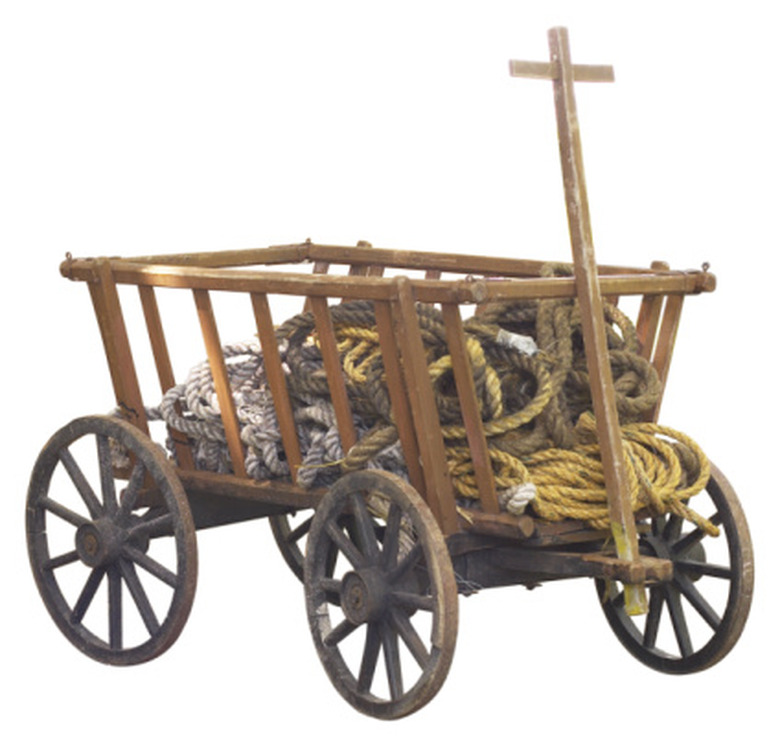19th Century German Goat Carts
A niche in the realm of nineteenth-century animal-drawn transportation, German goat carts reflected the values and needs of the community in which they developed. Small farming operations without access to large draft animals or fancy materials valued self-sufficiency and needed to get their produce to market. The goat cart was a practical, elegant and versatile solution. German goat carts remain popular today as antiques.
History of Goat Carts
Goats have been used as harness animals since antiquity, according to the Harness Goat Society. The nineteenth-century German goat carts have their roots in small farming communities without excess resources. It was most efficient to use goats to haul produce to market. Goats' diminutive size relative to horses meant easier care and less feed, and for small-scale farm operations, it did not matter that the goat could only haul one-and-a-half times its weight in produce.
- A niche in the realm of nineteenth-century animal-drawn transportation, German goat carts reflected the values and needs of the community in which they developed.
Uses of Goat Carts
In addition to hauling produce, such as pumpkins and squash to market, there is also record of goat carts being used to carry children, either to a destination or for pleasure and as an animal-powered wheelchair for disabled veterans.
Goat Cart Attributes
The carts are generally rustic, four-sided wooden carts around 2 feet wide, 4 feet long, and 2 feet high, with four wheels approximately 14 inches in diameter. They are small and lightweight enough to be pulled by a single goat or equivalent animal, such as a large dog. They typically lack the decoration found on horse-drawn buggies or carriages of that era, though some antique carts show traces of lively paint colors.
Antique Goat Carts
Many on- and offline auction sites list antique goat carts and similar rustic garden carts for sale. As with any antique, obtain a qualified appraisal before bidding or buying. Carts can be used for their original intended purpose depending on the condition or as an ornamental piece for home, garden or storage.
- In addition to hauling produce, such as pumpkins and squash to market, there is also record of goat carts being used to carry children, either to a destination or for pleasure and as an animal-powered wheelchair for disabled veterans.
